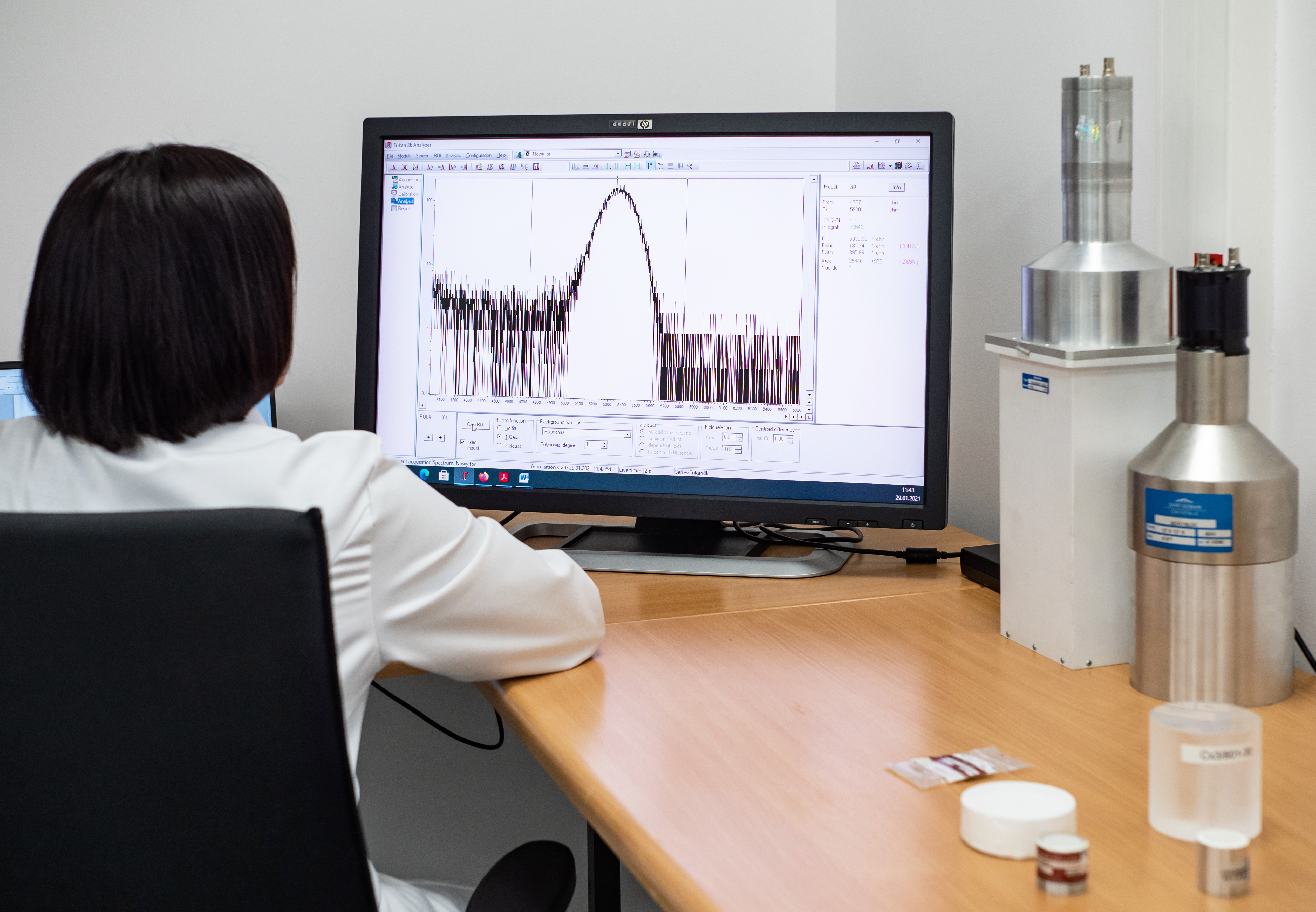
New BSO-406 hybrid scintillator being tested by NCBJ scientists
18-07-2025
Scintillators are an important component of ionising radiation detection systems. A team of scientists from the Radiation Detectors and Plasma Diagnostics Division at the National Centre for Nuclear Research (NCBJ) has tested a new hybrid scintillator that combines the advantages of several materials and can be used where reliability is crucial.
Scintillation technology has undergone significant changes over the past two decades. Great emphasis has been put on the development of so-called safe scintillators - capable of discriminating between gamma and neutron radiation and at the same time non-toxic, non-flammable, durable and resistant to harsh environmental conditions. Previously used liquid scintillators, despite their high efficacy, had numerous limitations - especially in terms of size, shape and safety of use. In response to these challenges, new solutions have emerged, such as plastic scintillators (e.g. EJ-276 or M-600) and glass scintillators (OGS), developed, among others, by teams from Lawrence Livermore National Laboratory, Target Systemelektronik GmbH and Sandia National Laboratories.
The latest representative of this group of materials is BSO-406, a hybrid scintillator developed at Sandia National Laboratories. This novel material is a composite consisting of 40% organic glass scintillator (OGS) and 60% polystyrene. The proportion is a compromise between light yield and mechanical strength as well as resistance to environmental factors. BSO-406 does not require protective coatings and can be used in detectors with complex geometries.
The properties of the material were subjected to detailed testing at the Radiation Detectors and Plasma Diagnostics Division at the National Centre for Nuclear Research, where it was compared with other scintillators: plastics EJ-276 and M-600, liquid EJ-309 and pure organic glass BSO-100 (OGS). The aim was to determine the suitability of the BSO-406 in advanced detection systems, particularly where it is necessary to distinguish signals from gamma and neutron radiation.
- The light yield of BSO-406 turned out to be only 40% lower than that of pure organic glass, which should be considered a very good result considering the presence of 60% polystyrene. This is a result that is slightly worse in comparison to liquid scintillators, but much better than in the case of plastics - comments Martyna Grodzicka-Kobyłka, Ph.D., Professor of NCBJ and first author of the paper, published in Nuclear Instruments and Methods in Physics Research A.
Particular attention was also paid to the ability to discriminate radiation, assessed by the pulse shape discrimination (PSD) method. - Although the best results were obtained by liquid and glass scintillators, BSO-406 achieved the highest level of gamma/neutron radiation discrimination among plastic-containing materials to date - adds Tomasz Szczęśniak, PhD, co-author of the study.
The NCBJ team emphasises that the hybrid BSO-406 could be an appealing alternative to existing materials - providing a balance between efficiency, safety and mechanical resistance. Its properties make it suitable for applications such as mobile radiation detection systems, where reliability, low toxicity and ease of formability are crucial.
The full results of the study are available in the publication:
M. Grodzicka-Kobylka, T. Szczesniak, L. Adamowski, L. Swiderski, K. Brylew, A. Syntfeld-Każuch, W. K. Warburton, J. S Carlson, J. J. Valiente-Dobón, Comparison of an OGS/Polystyrene scintillator (BSO-406) with pure OGS (BSO-100), EJ-276, EJ-309, and M600 scintillators, Nuclear Instruments and Methods in Physics Research A, Vol. 1077, 2025, 170559.
https://doi.org/10.1016/j.nima.2025.170559




